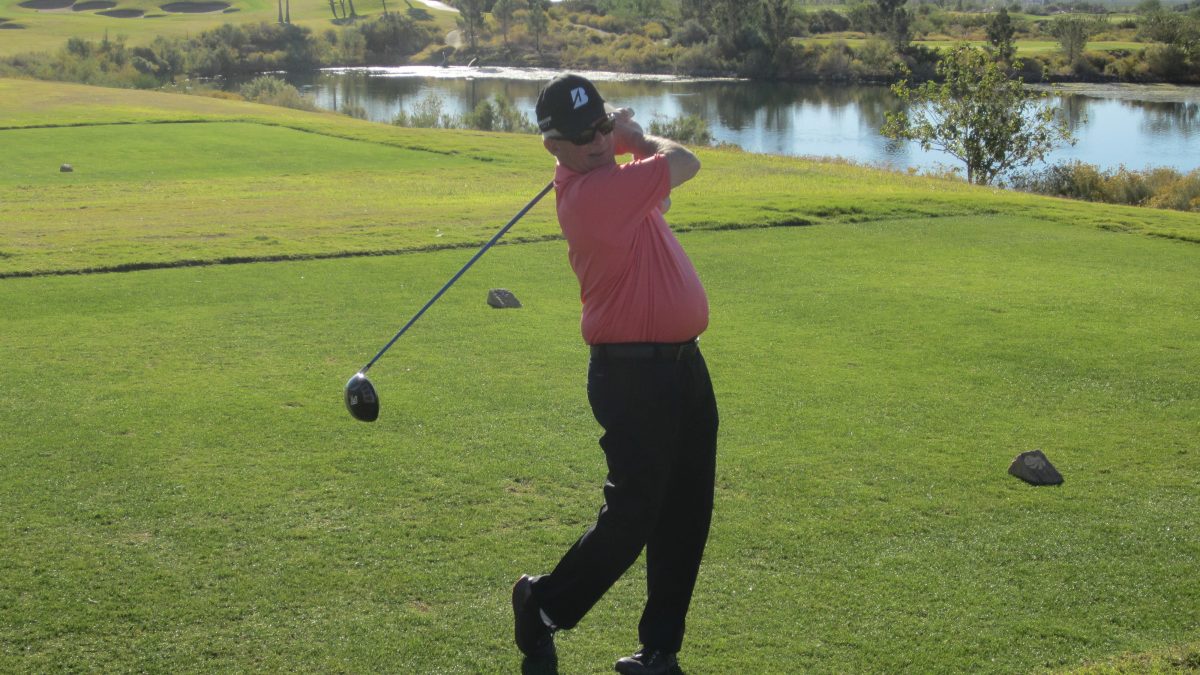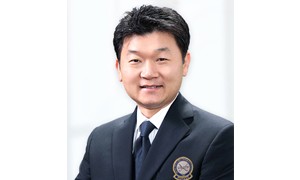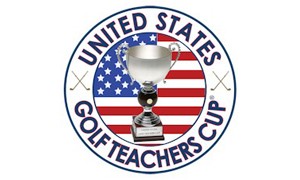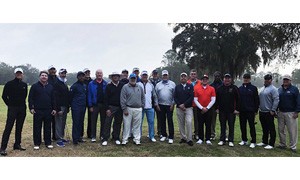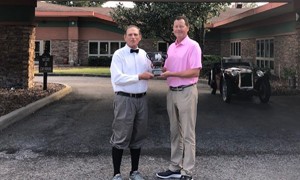Blog
Basic Knowledge When It Comes To Clubs
I teach at a golf retail store when I’m not executing my duties with the USGTF, and one of my side jobs is doing club fitting. I’m not exaggerating when I say I’ve learned more than I ever really wanted to know about clubs these past three years! Here’s a little bit of what I’ve learned:
Irons – Generally, there are muscleback irons, good-players irons with slight forgiveness, good-players irons with technology, and game-improvement irons. Clubs geared towards good players tend to have less offset and smaller heads, while game-improvement irons have more offset and bigger heads. Good players who hit the ball relatively short for their skill level should seek out irons that have some distance technology. Examples include Ping i500, Titleist T200, TaylorMade 790, and Callaway Mavrik. If distance isn’t a problem but some forgiveness is warranted, options would be Ping i200, Titleist T100, and Srixon Z 585. I would recommend muscleback irons only for good players who don’t need added distance and who strike the ball fairly pure – in other words, a very small audience.
Drivers – There are five general categories for drivers: 1) Drivers designed for accuracy with little workability; 2) Drivers designed for workability at the possible cost of accuracy; 3) Low-spin drivers; 4) Lightweight drivers; 5) Draw-biased drivers. There can be some overlap in these categories, but usually they are clearly defined in one of these categories.
Wedges – It wasn’t long ago that buying a wedge was as simple as picking one out with the loft you wanted. Now there are bounce angles and sole grinds to consider. Titleist Vokey wedges, for example, feature six different grinds!
How do we, as teachers, keep up with all these developments? As someone in the business, it’s not easy for me! Not to mention all the different shaft and ball options. I would advise going to the companies’ websites for information. While the descriptive text is designed for sales, it also provides some good info on each club. More importantly, just knowing the categories that exist can be helpful in steering our students towards the correct equipment for their game.
Must-Have Apps For All Golfers
USGTF Teaching Professional
Tampa, Florida
There’s a lot of junk in the Apple and Android app stores. Far too often, when we search for the right app, we end up with a list of knockoffs or shoddy apps that fill our phones with ads or bloatware and aren’t worth the bandwidth to download. But there are a few gems out there. These apps are the “diamonds-in-the-rough” that can be indispensable for the serious golfer.
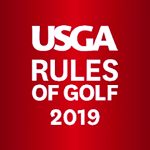 The Official Rules of Golf by the USGA
The Official Rules of Golf by the USGAEvery golfer needs a copy of the rules, and now it’s easier than ever to keep it right in your phone. This app features a shortened version of the rule book, covering the most common situations on the golf course. It also has the full Rules of Golf available if you really need it. The app contains high-quality videos demonstrating the proper interpretations of everything from movable obstructions to abnormal course conditions. Best of all, there are no ads on this app, and it’s entirely free.
 GolfLogix GPS + Putt Line
GolfLogix GPS + Putt LineThere are a lot of GPS apps out there. Pretty much all of them are going to help with yardage and scorekeeping. What sets the GolfLogix app apart is their Putt Line feature. It shows a 3-D contoured map of your green, complete with arrows showing which way your ball will break. By drawing a line on your phone’s screen, you’ll get an arrow showing you the direction you need to putt. It basically makes the read for you. The app is free to download, but you’ll need to pay $9.99 a month to continue using the Putt Line feature.
 Zepp Golf Swing Analyzer
Zepp Golf Swing AnalyzerThe Zepp Golf Swing Analyzer app is free to download and features a great video library of professional swings and swing analyses. To really make use of it, you’ll need to buy a $150 sensor sold by Zepp which attaches to the back of your golf glove. Through the sensor, you’ll be able to track all manner of swing metrics like club plane, tempo, hip rotation, and backswing positioning. The cost of the sensor makes this app by far the most expensive on this list, but this kind of powerful swing analysis can be an invaluable training aid. As a nice bonus, the sensor can be used for a variety of other sports like tennis or baseball.
 The Master’s App
The Master’s AppYou might not keep it on your phone year-round, or you might. Honestly, it’s one of the best apps covering any sporting event. Sure, you can watch the main CBS telecast, or with this app you can stick with coverage of your favorite player or you can relax and watch live feed of groups coming around Amen Corner. Download it now and relive Tiger’s historic 2019 Masters win one more time.
 Golden Tee
Golden TeeThat’s right! The ubiquitous track ball arcade game – a mainstay of sports bars and family restaurants across the United States – is coming to your phone. Prepare to see your work productivity fall off a cliff as you spend countless hours competing against players around the world on five authentic 18-hole courses. Customize your avatar in traditional golf attire or make them wear a scuba diving mask and a cape! Slated for release in the last quarter of 2019, Golden Tee will be free to play, but like all video games these days, will contain in-app purchases.
Good and Bad News
USGTF Contributing Writer, Vernon, British Columbia
As I write this article, I am sitting at my computer on a bright sunny day in the Okanagan Valley in southern British Columbia. The wine grape harvest is on; apples are being picked; golf is winding down, and here in Canada it is Thanksgiving Day. And what a lot to be thankful for! As I said, the sun is shining after a very wet and cool fall. Snow has already arrived at our ski resort just 25 minutes away and 4,000 feet higher in elevation. That will probably disappear, but we could be cross-country skiing by early November and alpine skiing by the end of November. This is truly a great place to live! On the bad news front, I was at a bagpiping event May 5th and, walking up some old concrete steps, I caught my toe on the top step and fell on my face. My left arm extended, and I landed toward that side. I stretched all of the ligaments in my rotator cuff and am now just able to take a bit of a backswing (I am a lefthanded golfer), so I have not been able to play golf at all this past summer season. The good news is that my wife more than made up for my lack of playing with her more than twice-a-week outings and is now a certified golf fanatic. The bad news is that I have been in a position of having to applaud her every high point: longest drive on one hole; closest to the pin on another hole; winning the deuce pot, and on and on. For someone who used to wonder how pro golfers being interviewed could remember every shot they made going back multiple years, she has certainly mastered the art. My reward for being such a good and attentive listener and staying at home with a massive to-do list: I am now caught up and way ahead on the ever-important marital points! On the bad news front, I have to admit to having an addiction. I am addicted to big events! The good news is, I have run into and continue to have great friends who believed in the vision and are committed to what we are doing. Thank-fully, they also believed that it is as easy to do something big as it is to do something small, and we are all rewarded for our efforts. We also believe that what we are doing is great, but if we stand still and don’t strive to be bigger and better, someone else will pass us or come up with something to replace us. And so it is with the golf teaching business. Thankfully, the USGTF technical committee is constantly analyzing teaching techniques and new equipment, and how to make use of it to get more people golfing more often. Are you as good as you are going to get? Of course not. Even as we get older, we want to stay engaged, and thankfully we continue to learn from our peers, the teachers who have gone before us, and from the young, new thinkers coming up behind us that now make up the technical squad. On the trivia front, I was entertained the other day listening to a radio program that featured an English-language specialist. He and the host were talking about “collective nouns.” You may not have heard of the term, but you have certainly used many. Here are some examples: A flock of birds; a flock of sheep; a herd of deer; a hive of bees; a litter of puppies; a murder of crows and a pack of hounds. As I listened, I realized there was nothing pertaining to golf. So here goes: Students standing around on the lesson tee waiting for the golf pro – a slice of golfers. The foursome of old guys holding you up – a cart of fogies. The locker room after the senior Stableford – a sag of butts. The 20 ladies from the health resort next door out for a trek – a babble of walkers. Members of your teaching federation at a gathering – a company of USGTFs. I know there are bigger minds out there than mine that can come up with similar or more creative offerings. Send them in to your editor! I am sure there will be a prize waiting. The last bad news is that my wife and I are without a TV in the summer. Perhaps that is good news, as both Canada and the USA are in the throes of national elections. Perhaps that is good news and something else to be thankful for. If you feel good about things, do not turn on cable news. But there is an antidote for feeling the world is going to end in a few years. Standing in a lift line last winter, the lift operators had a radio on the outdoor speakers, and a psychologist was explaining to listeners that if they were in the midst of a Christmas crisis, take a walk in the woods. The quiet and refreshing solitude would fix them right up. How lucky are we with golf in that most golf courses are just that, solitude in nature. For me, the good news is that I am usually really deep in the woods, a lot!


